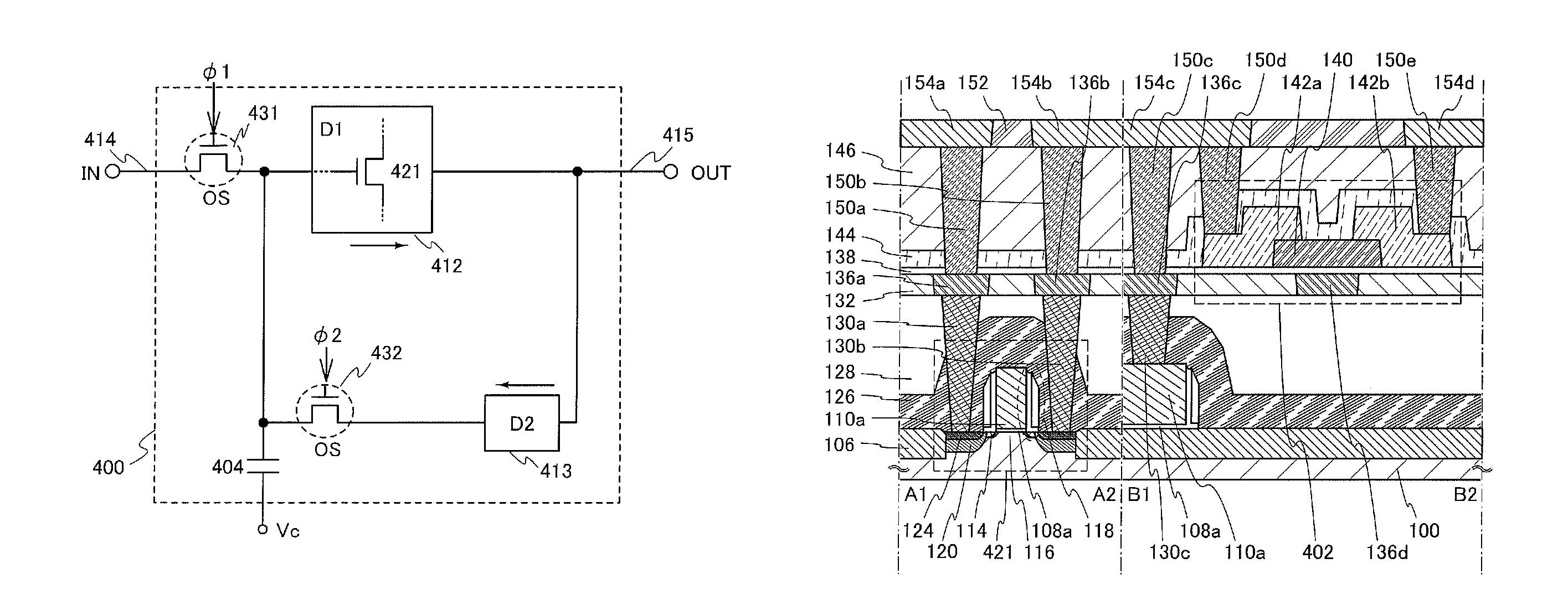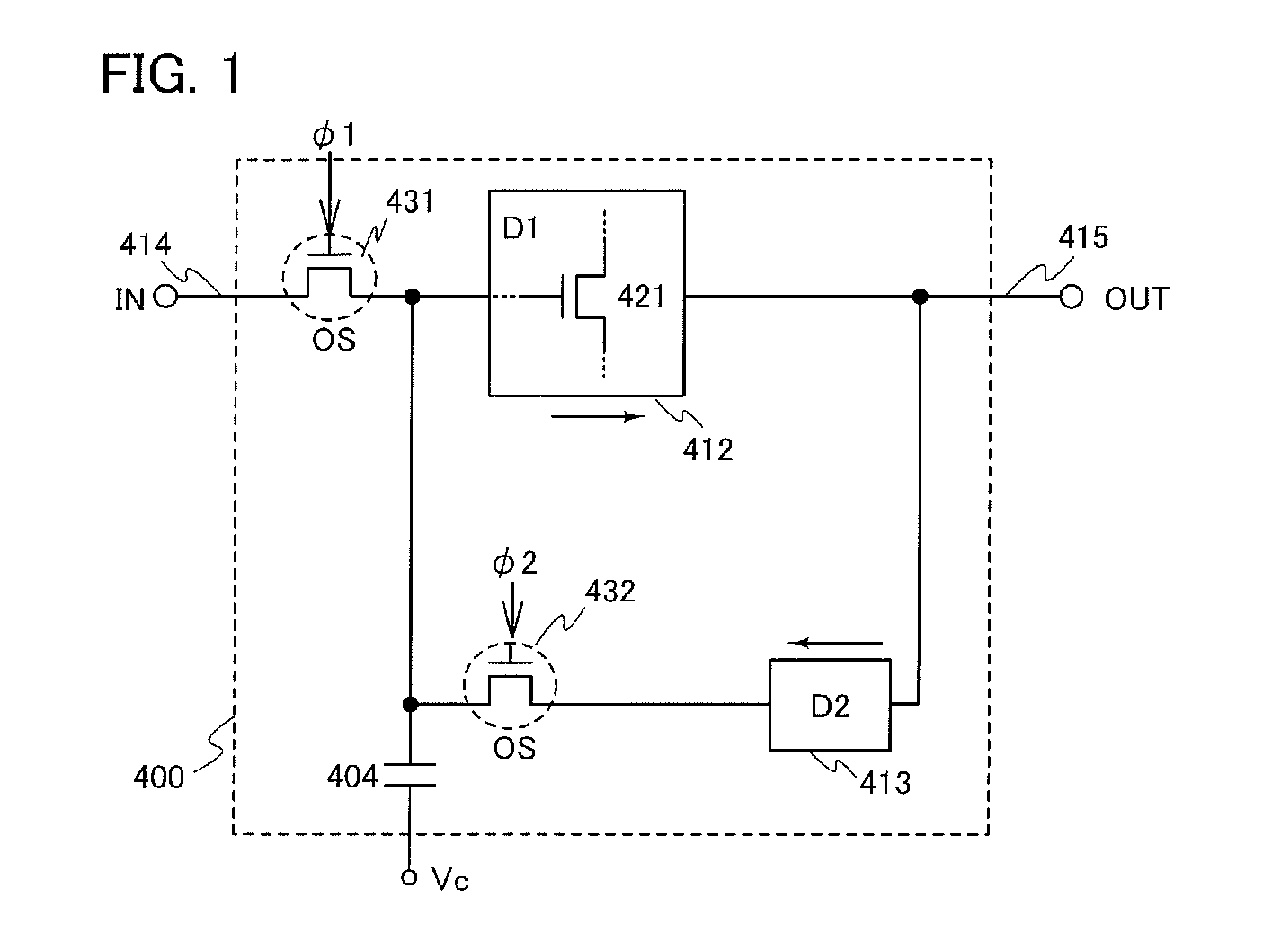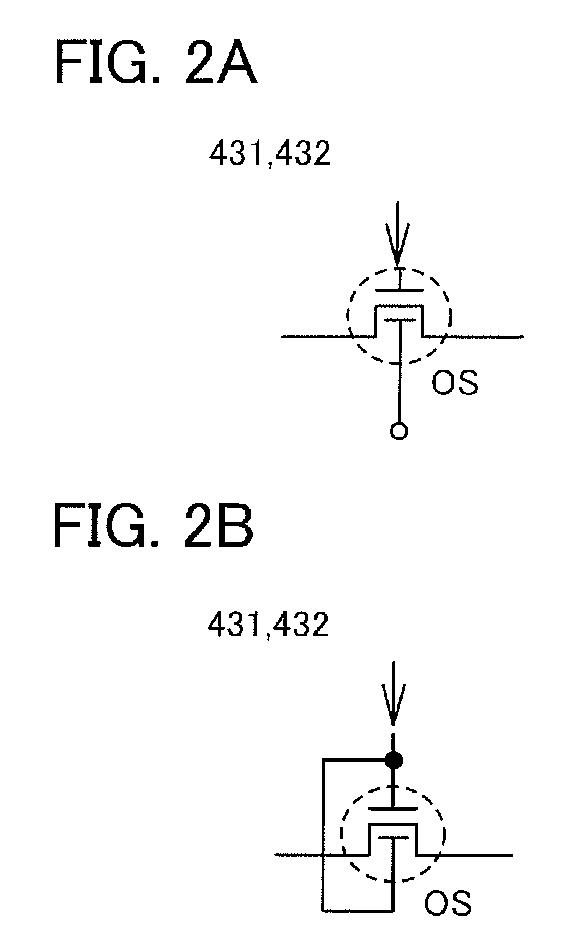Non-volatile latch circuit and logic circuit, and semiconductor device using the same
a logic circuit and latch circuit technology, applied in pulse generators, pulse techniques, instruments, etc., can solve problems such as increased variation, low hydrogen concentration, and reduced voltage reliability, and achieve low carrier concentration, high purification, and low cost
- Summary
- Abstract
- Description
- Claims
- Application Information
AI Technical Summary
Benefits of technology
Problems solved by technology
Method used
Image
Examples
embodiment 1
[0061]In this embodiment, a configuration and operation of a non-volatile latch circuit which is one embodiment of the disclosed invention, a configuration and a method for manufacturing an element included in the non-volatile latch circuit, and the like will be described with reference to FIG. 1, FIGS. 2A and 2B, FIGS. 3A and 3B, FIGS. 4A to 4H, FIGS. 5A to 5G, FIGS. 6A to 6D, FIG. 7, FIG. 8, FIGS. 9A and 9B, and FIG. 10.
[0062]FIG. 1 illustrates a configuration of a non-volatile latch circuit 400. The non-volatile latch circuit 400 illustrated in FIG. 1 has a loop structure in which an output of a first element (D1) 412 is electrically connected to an input of a second element (D2) 413 and an output of the second element (D2) 413 is electrically connected to an input of the first element (D1) 412 through a second transistor 432.
[0063]The input of the first element (D1) 412 is electrically connected to a wiring 414 to which an input signal is applied through a first transistor 431. ...
embodiment 2
[0233]In this embodiment, a configuration and operation of the non-volatile latch circuit that is an embodiment of the disclosed invention will be described with reference to FIGS. 11A and 11B and FIG. 12.
[0234]FIG. 11A illustrates a configuration of the non-volatile latch circuit 400. FIG. 11B illustrates a configuration of part of the non-volatile latch circuit 400. FIG. 12 is an example of a timing chart of the non-volatile latch circuit 400.
[0235]FIG. 11A illustrates an example of the configuration of the latch circuit 400 in FIG. 1, where a first inverter is used as the first element 412 and a second inverter is used as the second element 413. The first transistor 431 and the second transistor 432 can have a structure similar to that shown in Embodiment 1. That is, as the first transistor 431 and the second transistor 432, it is possible to use a transistor which uses an oxide semiconductor layer for a channel formation region and has normally-off characteristics and a signific...
embodiment 3
[0257]In this embodiment, operation of the non-volatile latch circuit that is an embodiment of the disclosed invention will be described with reference to FIGS. 13A and 13B. The non-volatile latch circuit has the same configuration as that illustrated in FIGS. 11A and 11B, and the timing chart thereof is different from that of FIG. 12.
[0258]FIG. 13A illustrates an example of a timing chart of potentials of a signal φ1, a signal φ2, an input signal IN, and an output signal OUT obtained during a period when the non-volatile latch circuit 400 operates (operation period) and a period when the non-volatile latch circuit 400 does not operate (non-operation period). FIG. 13A also illustrates a potential of the node S in the latch circuit 400, a potential of the power source voltage VDD applied to the first element (first inverter) 412 and the second element (second inverter) 413, and a potential Vc of the other electrode of the capacitor 404.
[0259]In FIG. 13A, a period a, a period b, a per...
PUM
 Login to View More
Login to View More Abstract
Description
Claims
Application Information
 Login to View More
Login to View More - R&D
- Intellectual Property
- Life Sciences
- Materials
- Tech Scout
- Unparalleled Data Quality
- Higher Quality Content
- 60% Fewer Hallucinations
Browse by: Latest US Patents, China's latest patents, Technical Efficacy Thesaurus, Application Domain, Technology Topic, Popular Technical Reports.
© 2025 PatSnap. All rights reserved.Legal|Privacy policy|Modern Slavery Act Transparency Statement|Sitemap|About US| Contact US: help@patsnap.com



